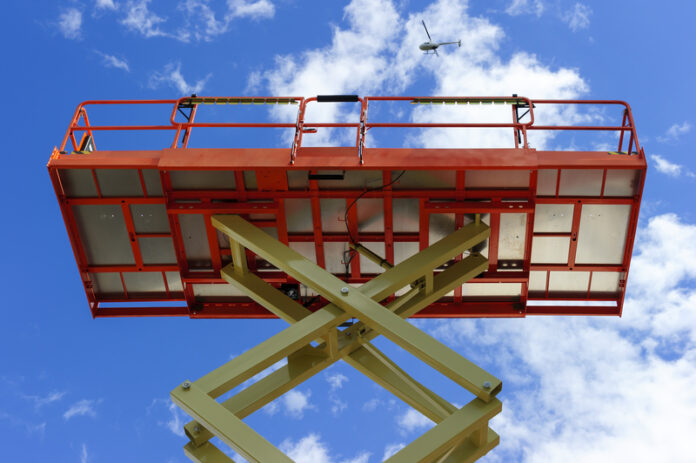
Scissor lifts are a practical and reliable solution for working at height in construction, maintenance, warehousing, and other industries. However, they must be used with care. If you are a first-time user or planning to arrange a Scissor Lift Hire for a new project, safety should always come first. Understanding how to operate the equipment correctly and recognising common risks can help prevent accidents and ensure a productive work environment.
Get Proper Training Before Use
Before using a scissor lift, it is essential to complete formal training. In the UK, the most recognised qualification is the IPAF 3a certificate, which covers the safe use of mobile vertical lifts. The training includes both theory and practical instruction and confirms that you understand how to operate the lift safely and respond to potential hazards. Many scissor lift hire companies require proof of training before they release equipment, so proper certification is not only important for safety but also for access to the machinery.
Always Carry Out Pre-Use Checks
Before you start work with any scissor lift, a full pre-use inspection is necessary. This involves checking the equipment for visible damage, leaks, flat tyres, loose parts, or any malfunctioning controls. You should also make sure that all safety features, such as guardrails and the emergency stop button, are secure and working correctly. If there is any fault, no matter how minor, report it immediately and do not use the lift until it has been inspected and cleared by a qualified professional.
Use Only on Level and Stable Ground
A scissor lift should only be operated on level and stable ground unless it is a model specifically designed for uneven or rough terrain. Operating on sloped or soft surfaces increases the risk of tipping over, which can lead to serious injuries or damage. Before beginning any work, check that the area is clear of hazards such as holes, kerbs, or loose debris, and confirm that the surface can support the weight of the lift and any additional load on the platform.
Do Not Overload the Platform
Every scissor lift has a maximum load capacity that must not be exceeded. This includes the combined weight of the operator, tools, and any materials brought onto the platform. Overloading can reduce stability and put strain on the hydraulic system, increasing the risk of malfunction or tipping. Always check the load rating printed on the equipment and follow the manufacturer’s guidelines. If you are unsure, contact your scissor lift hire provider for assistance in determining safe weight limits.
Stay Inside the Guardrails at All Times
All work should be performed from within the platform while standing firmly on the floor. Never sit on, lean over, or climb on the guardrails, as this creates a significant fall risk. Using ladders, stools, or other objects to reach beyond the lift is not only unsafe but also violates basic safety practices. The lift is designed to provide secure access to elevated areas, and misusing the guardrails compromises that protection and increases the chance of an accident.
Check for Overhead Hazards Before Lifting
Before raising the platform, always look above and around for potential overhead hazards. Common dangers include power lines, hanging lights, beams, signs, and structural features. Make sure there is enough clearance to lift and operate the platform safely. It is especially important to maintain a safe distance from live electrical wires, as contact could result in severe injury or even death. Taking a few moments to assess the surroundings can prevent serious incidents.
Wear the Correct Personal Protective Equipment
Depending on the worksite and task, you may be required to wear personal protective equipment such as a hard hat, safety boots, gloves, and high-visibility clothing. In some cases, a fall restraint system may also be required, especially if anchor points are available on the platform. Always follow your site’s safety policy and wear the required equipment at all times when operating or working near a scissor lift. Proper PPE not only helps prevent injury but also ensures compliance with safety regulations.
Never Move the Lift While the Platform Is Elevated
Unless your scissor lift model is specifically designed to be driven while raised, the platform must always be fully lowered before moving the lift. Moving the equipment while elevated can cause tipping or collisions with nearby objects or people. This is a common mistake made by new users and can lead to serious damage and injury. Lower the lift completely before repositioning, and take care to observe your surroundings during any movement.
Keep People Away from the Base During Operation
It is important to keep the area around the base of the scissor lift clear while the equipment is in use. Workers and bystanders should maintain a safe distance to avoid being caught in pinch points or being struck by the machine if it moves. You can use cones, barriers, or warning signs to mark a safe working zone. This is especially important in busy environments such as construction sites or warehouses, where people may walk through the area without noticing the machine in use.
Ask for Help If You Are Unsure
If you are ever unsure about how to use a control, interpret a signal, or handle an issue with the equipment, always stop and ask for help. Never guess or assume how something works when operating a scissor lift. You can refer to the user manual, speak with your supervisor, or contact your scissor lift hire provider for clarification. A moment spent asking a question is far safer than making a wrong decision that could result in injury or damage.
Conclusion
Operating a scissor lift safely is about more than simply following basic instructions. It requires proper training, attention to the environment, and an understanding of how the equipment works. If you are a first-time user, take these safety tips seriously to protect yourself and others around you. Whether you are using your equipment or arranging a scissor lift hire, being prepared and alert on the job will help ensure that the work is completed safely and efficiently.
Find a Home-Based Business to Start-Up >>> Hundreds of Business Listings.













































